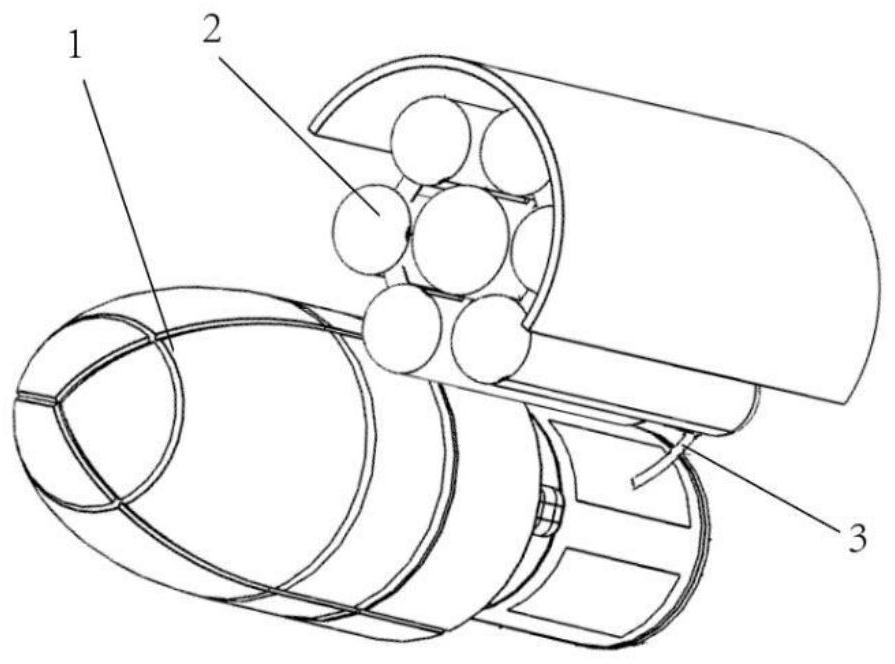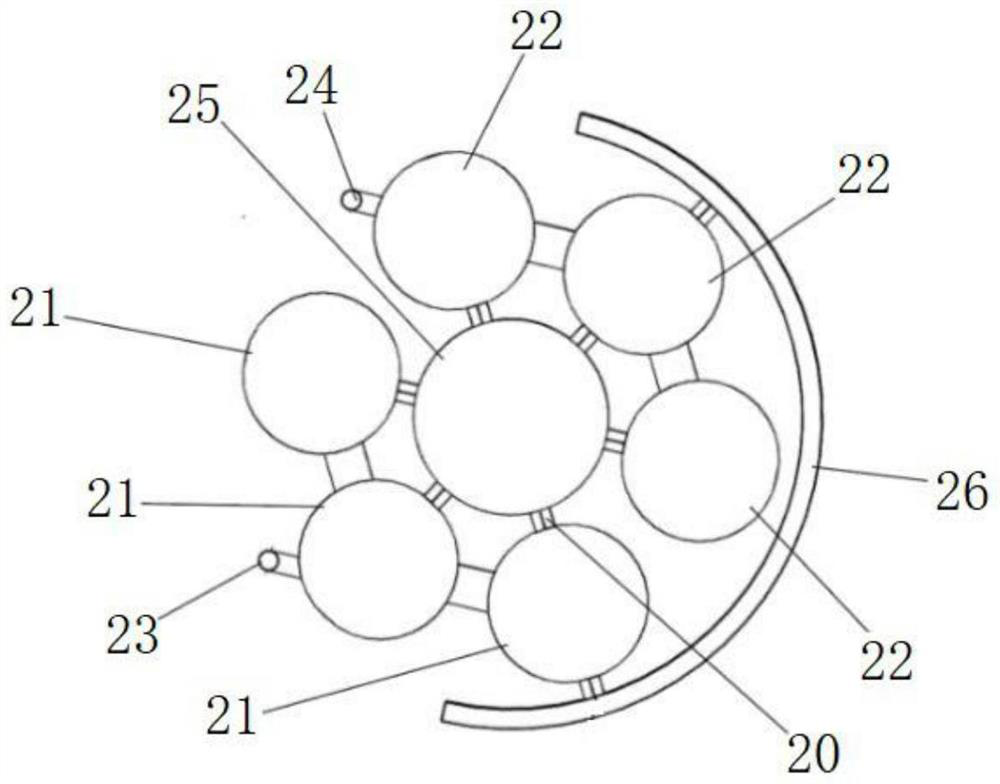High-orbit spacecraft launching method based on multi-rocket combination
A spacecraft launch and spacecraft technology, applied in the field of space launch, can solve the problems of large economic losses and high manufacturing costs, and achieve the effect of reducing economic losses
- Summary
- Abstract
- Description
- Claims
- Application Information
AI Technical Summary
Benefits of technology
Problems solved by technology
Method used
Image
Examples
Embodiment 1
[0036] A method for launching a high-orbit spacecraft based on a combination of multiple rockets, used to launch a target spacecraft 1 to a high orbit, such as figure 1 As shown, the method includes the following steps:
[0037] S1. Launch the target spacecraft and the supply spacecraft to low orbit respectively by rocket;
[0038] S2. The target spacecraft docks with the supply spacecraft in low orbit;
[0039] S3. After docking, the supply spacecraft supplies the propellant carried by itself to the target spacecraft, and undocks after the supply ends;
[0040] S4. After the target spacecraft is supplied with propellant, it transfers to a high orbit through its own power.
[0041] Wherein, the target spacecraft 1 includes a load compartment, a power compartment and a propellant compartment, wherein the propellant compartment includes an oxidant compartment for storing oxidant and a fuel compartment for storing fuel. Such setting makes the target spacecraft 1 not only carry t
Embodiment 2
[0052] The difference from Embodiment 1 is that in S1, there are two or more supply spacecraft 2, and each supply spacecraft 2 is launched to different low orbits by rockets. Such setting enables the target spacecraft 1 to transfer to each low orbit in sequence from low to high, and to carry out propellant replenishment after docking with each supply spacecraft 2 on each low orbit, so that the target spacecraft 1 can be transferred to 1 is launched into a higher orbit.
[0053] For example, a certain type of rocket has a maximum carrying capacity of 15 tons for low-earth orbit (LEO), 12 tons for medium-earth orbit (MEO), and 7 tons for geosynchronous orbit (GEO). GTO) has a maximum carrying capacity of 4 tons. Now it is necessary to launch a 10-ton payload into lunar orbit, a task that this rocket cannot perform.
[0054] Specific launch: Arrange two rockets to launch the target spacecraft 1 and the supply spacecraft 2 from the earth 5 to the same low-earth orbit 6, and then ar
Embodiment 3
[0058] The difference between it and the second embodiment is that this embodiment demonstrates the process of launching a 5-ton load into the orbit of Mars by using the combination of the above-mentioned rockets through the method provided by the present invention.
[0059] For example, a certain type of rocket has a maximum carrying capacity of 15 tons for low-earth orbit (LEO), 12 tons for medium-earth orbit (MEO), and 7 tons for geosynchronous orbit (GEO). GTO) has a maximum carrying capacity of 4 tons. Now it is necessary to launch a 5-ton payload to Mars orbit 14, which is not possible for this type of rocket.
[0060] Specific launch: Arrange two rockets to launch the target spacecraft 1 and the supply spacecraft 2 from the earth 5 to the same low-earth orbit 6, and then arrange a rocket to launch another supply spacecraft 2 from the earth 5 to the synchronous transfer Track 9.
[0061] Among them, the launch vehicle A is used to launch the target spacecraft 1 to the low
PUM
 Login to view more
Login to view more Abstract
Description
Claims
Application Information
 Login to view more
Login to view more - R&D Engineer
- R&D Manager
- IP Professional
- Industry Leading Data Capabilities
- Powerful AI technology
- Patent DNA Extraction
Browse by: Latest US Patents, China's latest patents, Technical Efficacy Thesaurus, Application Domain, Technology Topic.
© 2024 PatSnap. All rights reserved.Legal|Privacy policy|Modern Slavery Act Transparency Statement|Sitemap



